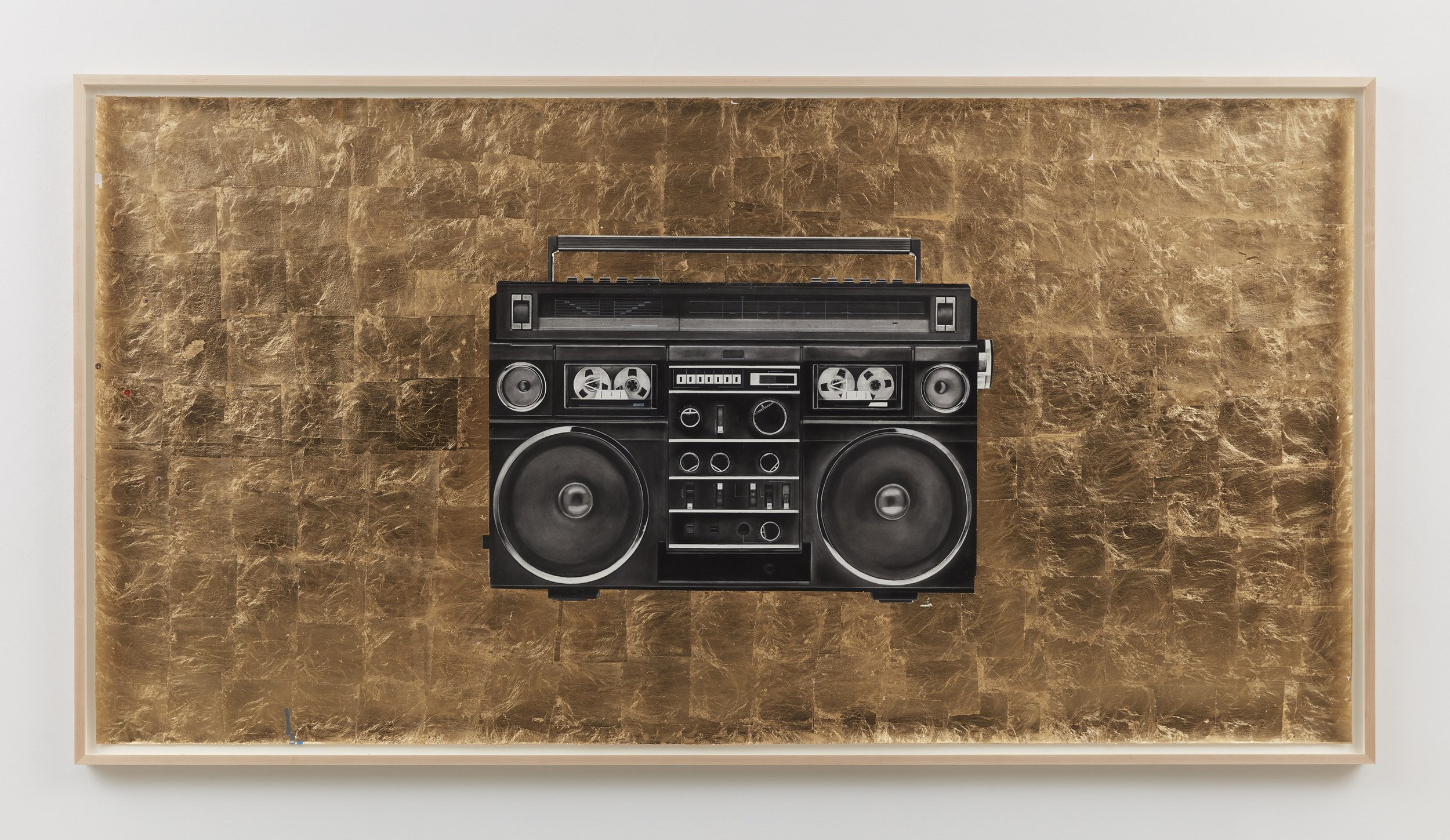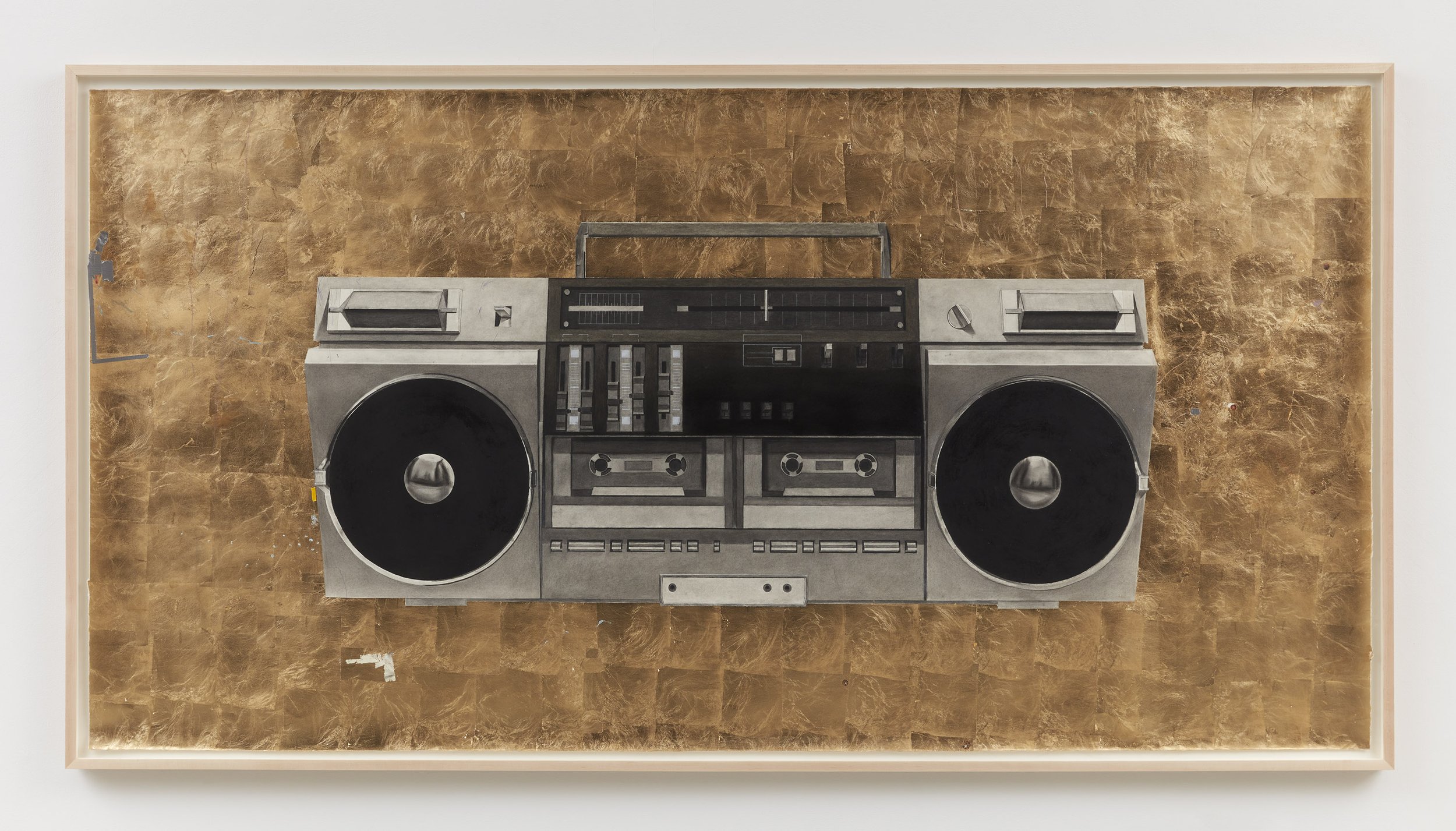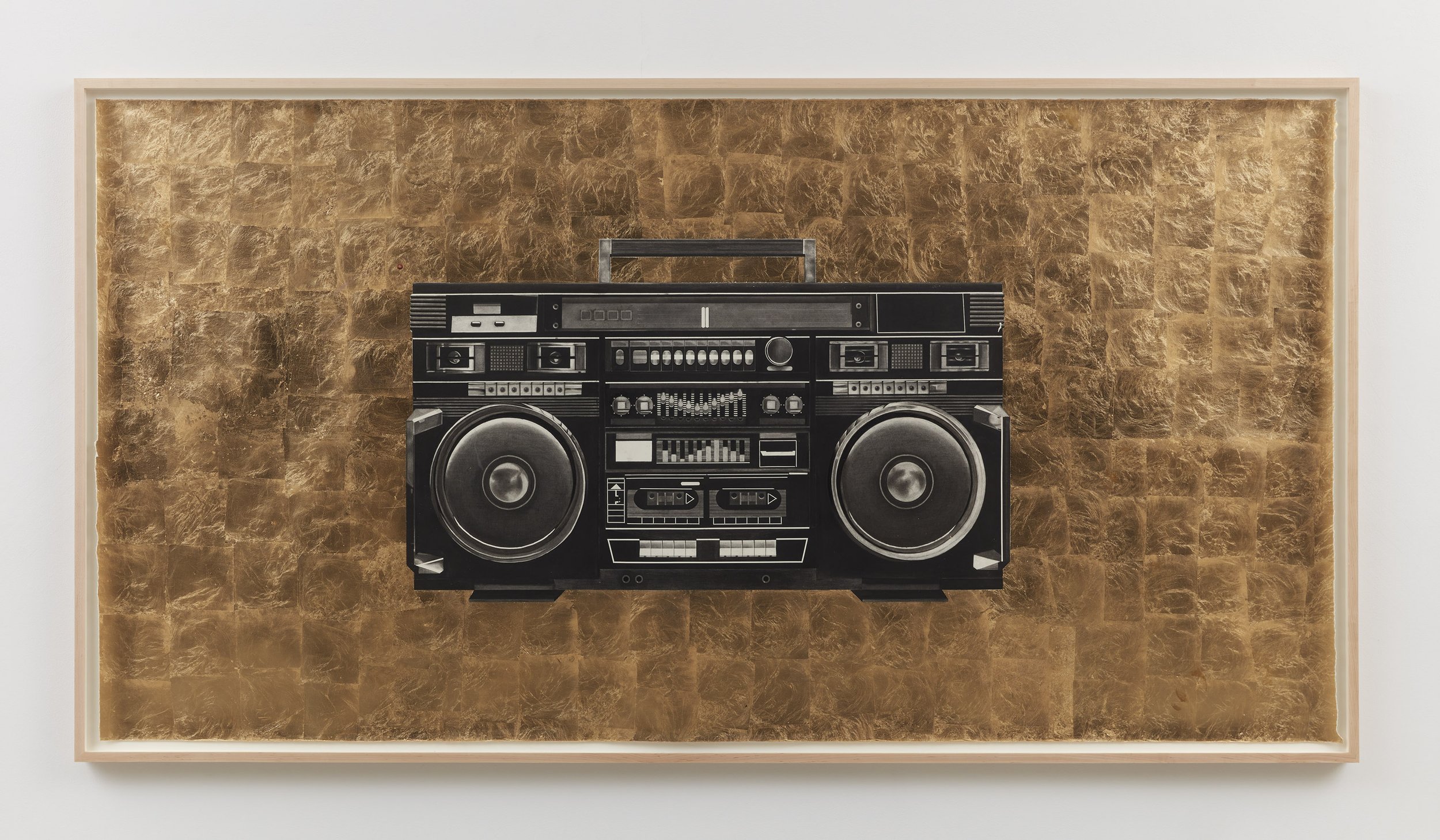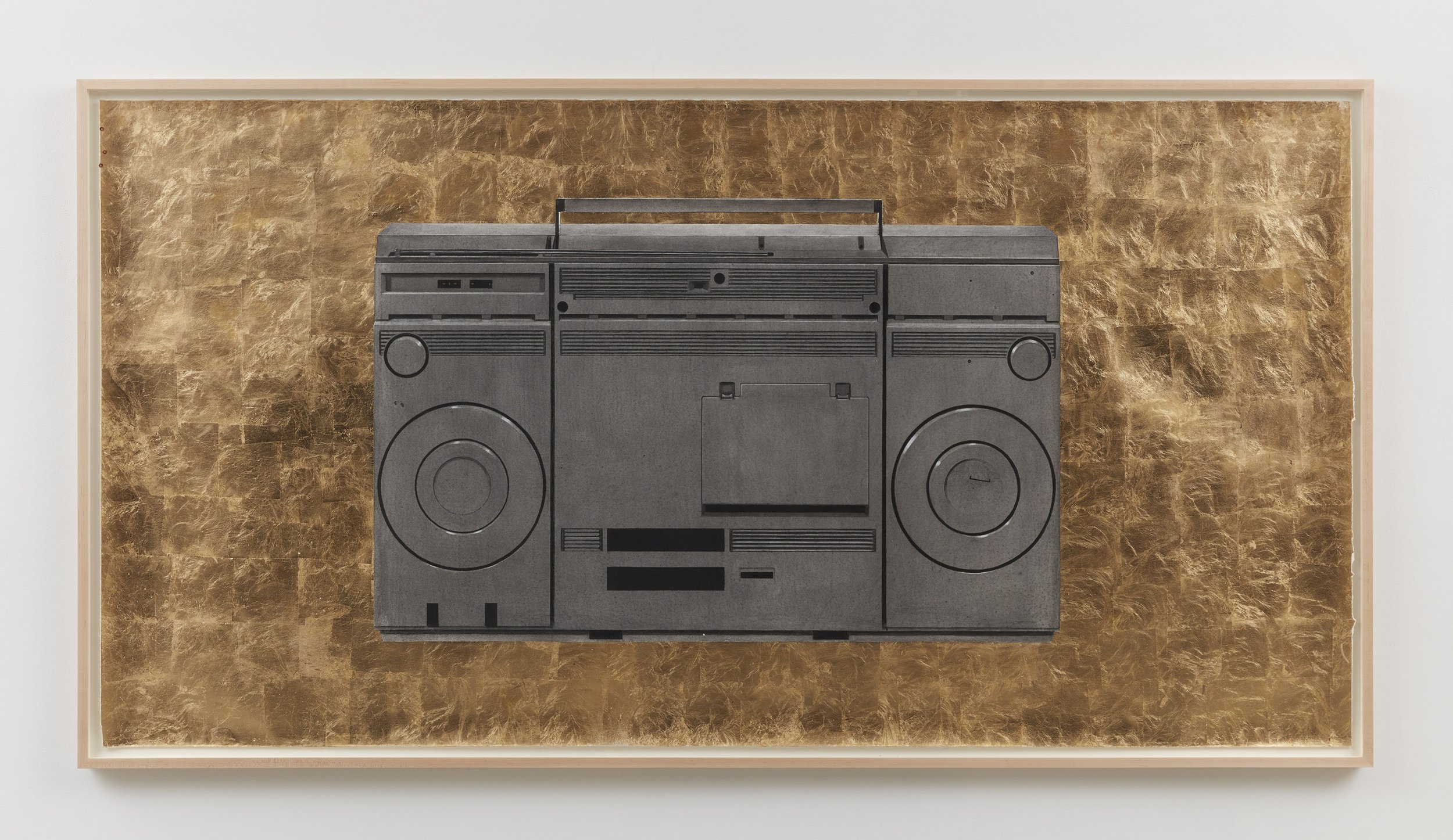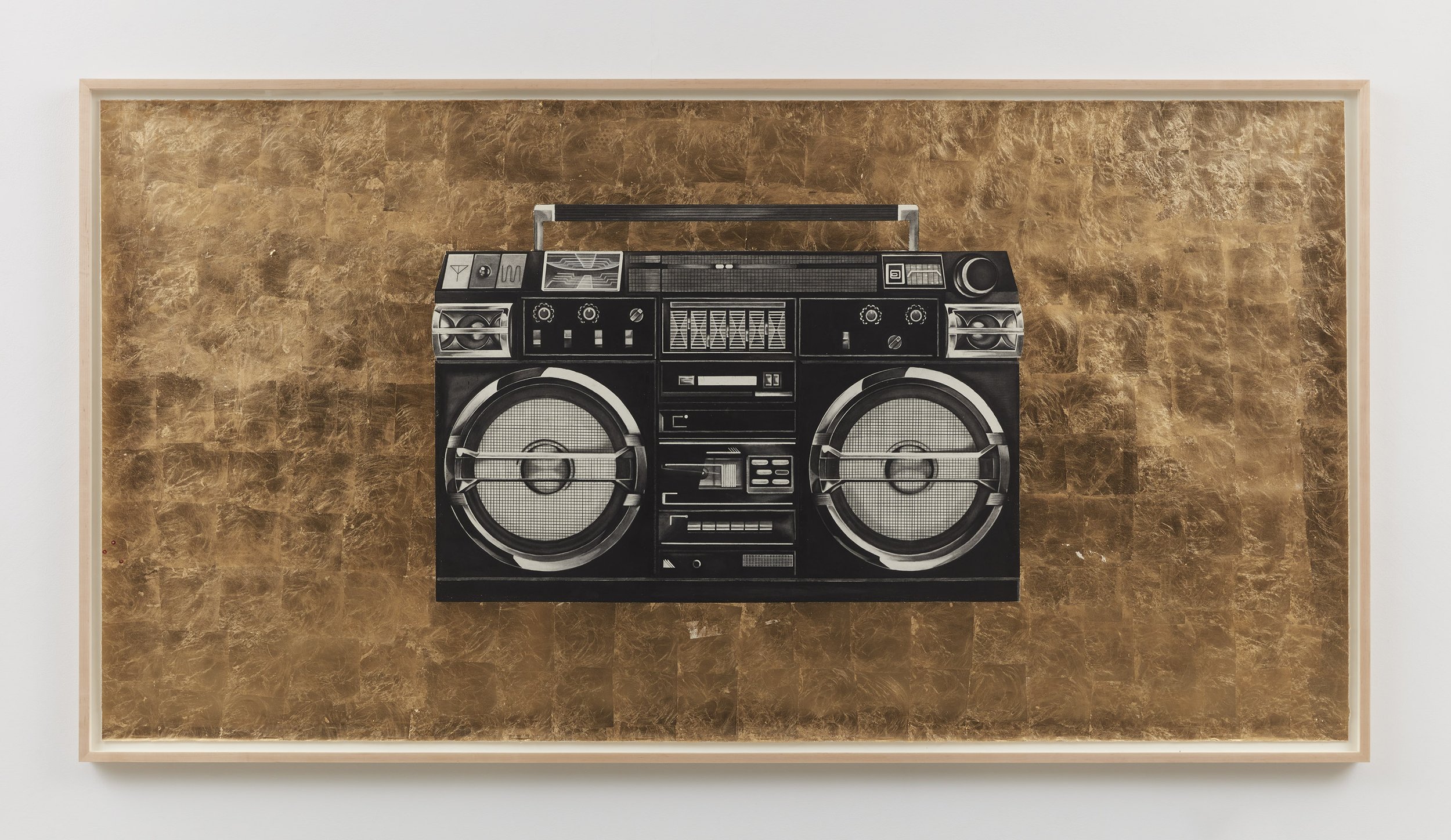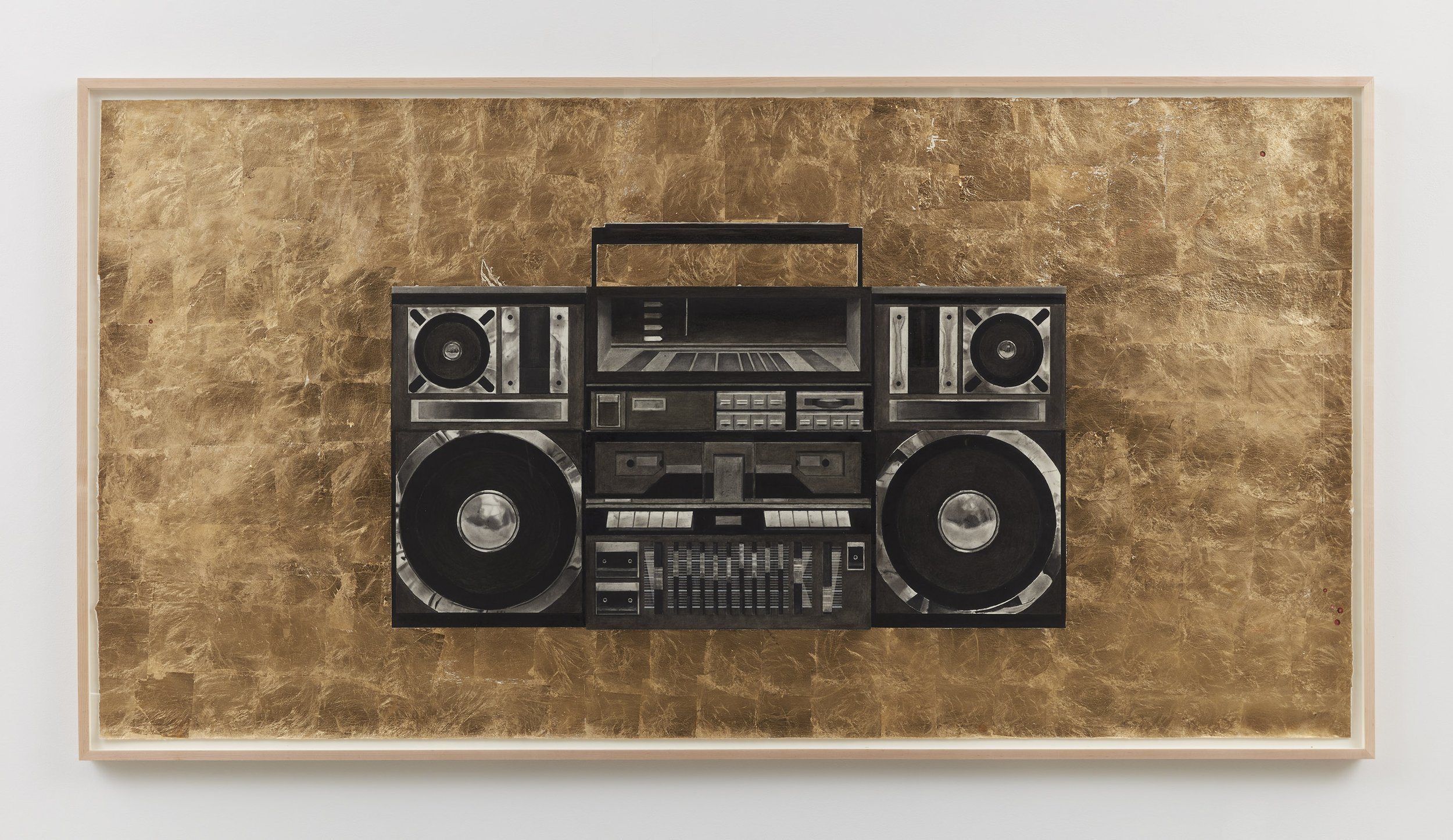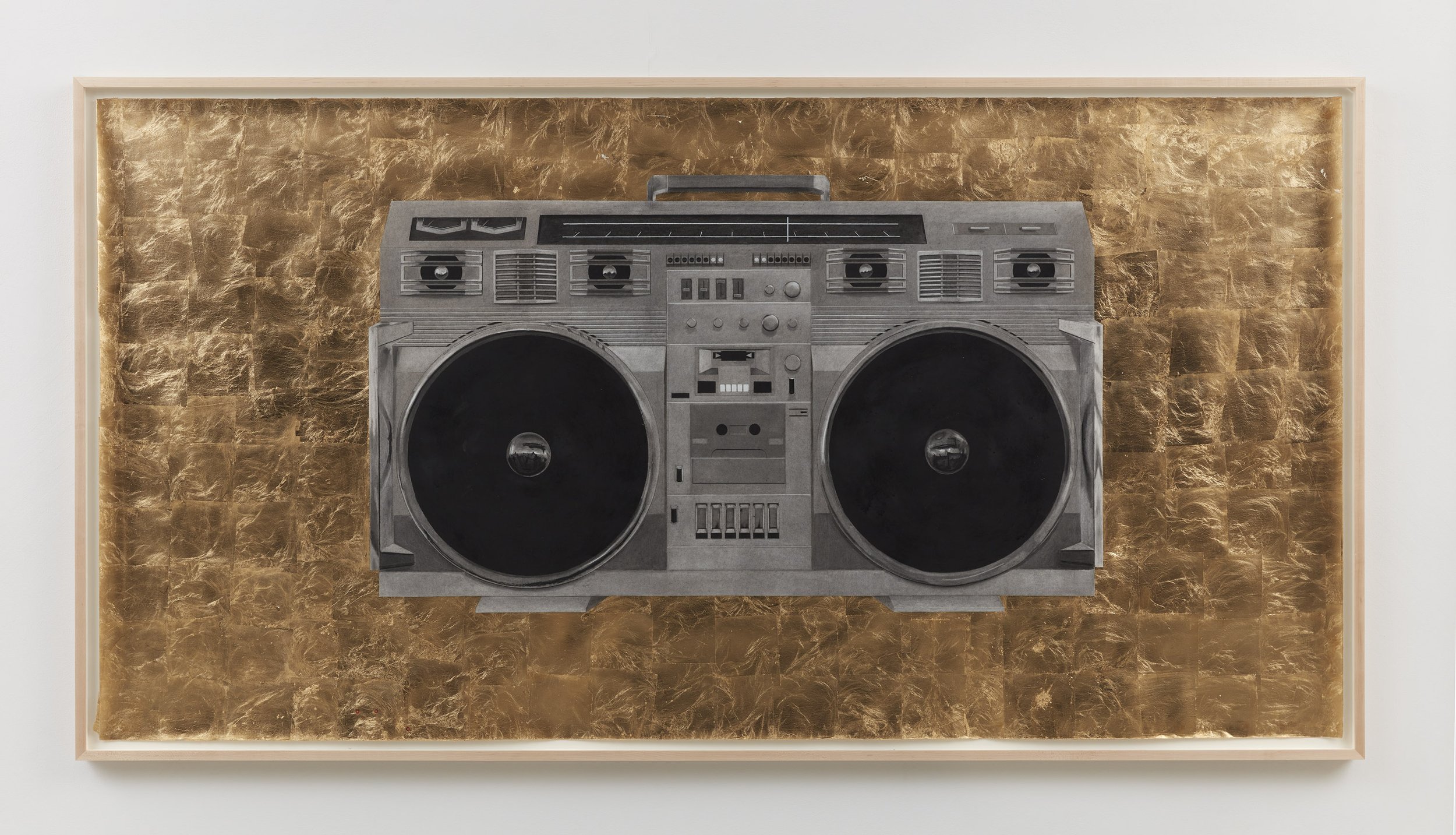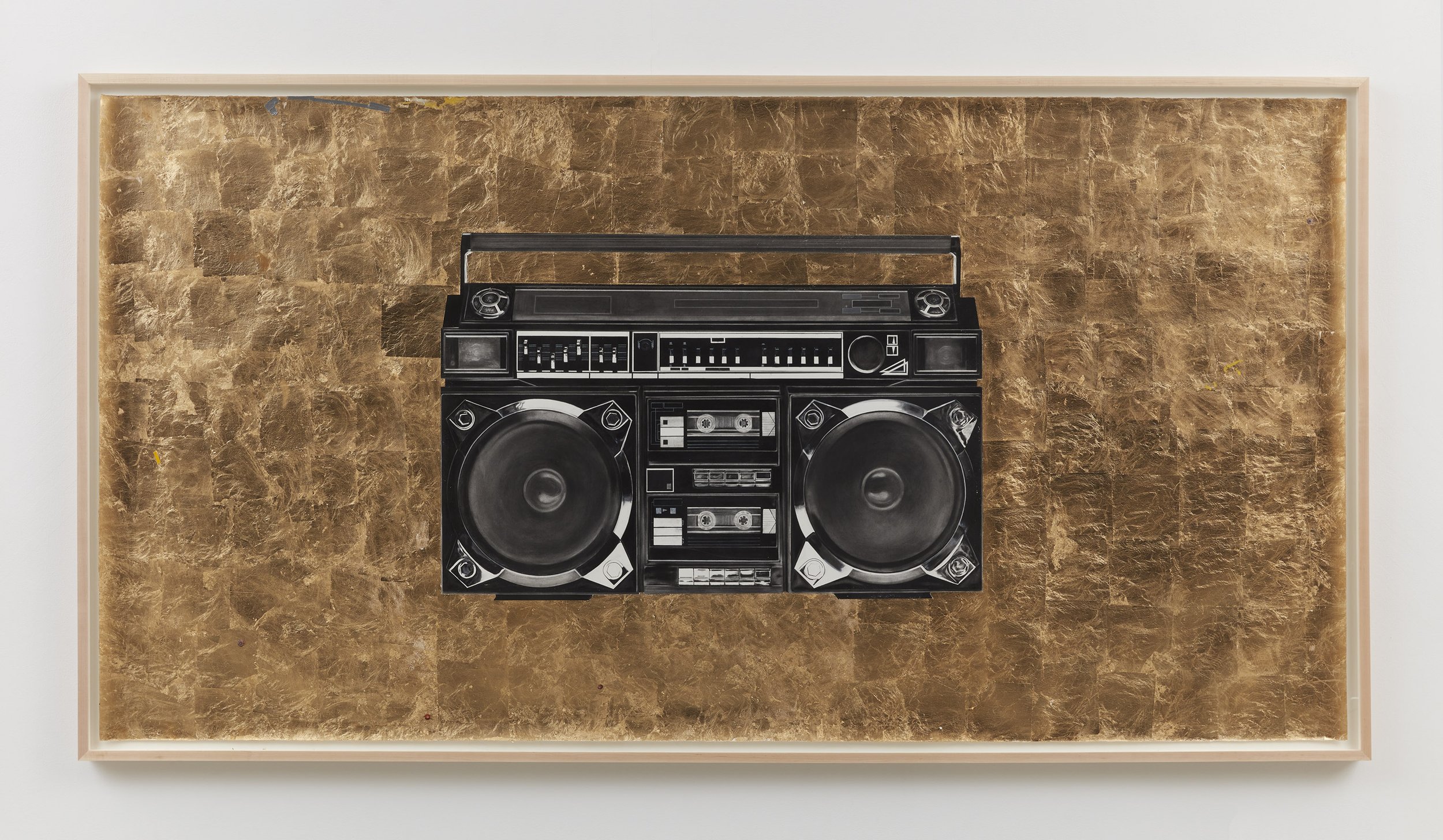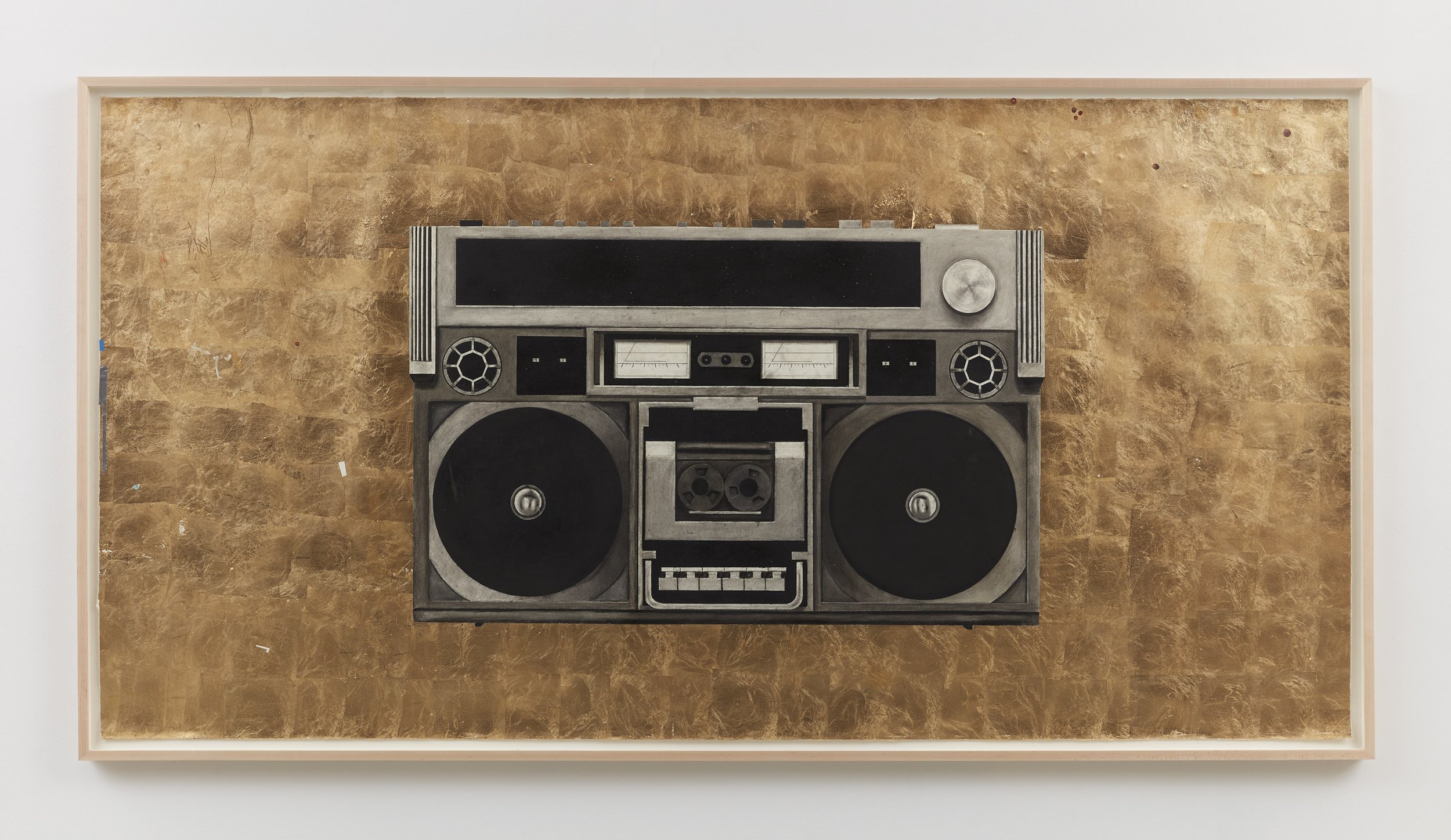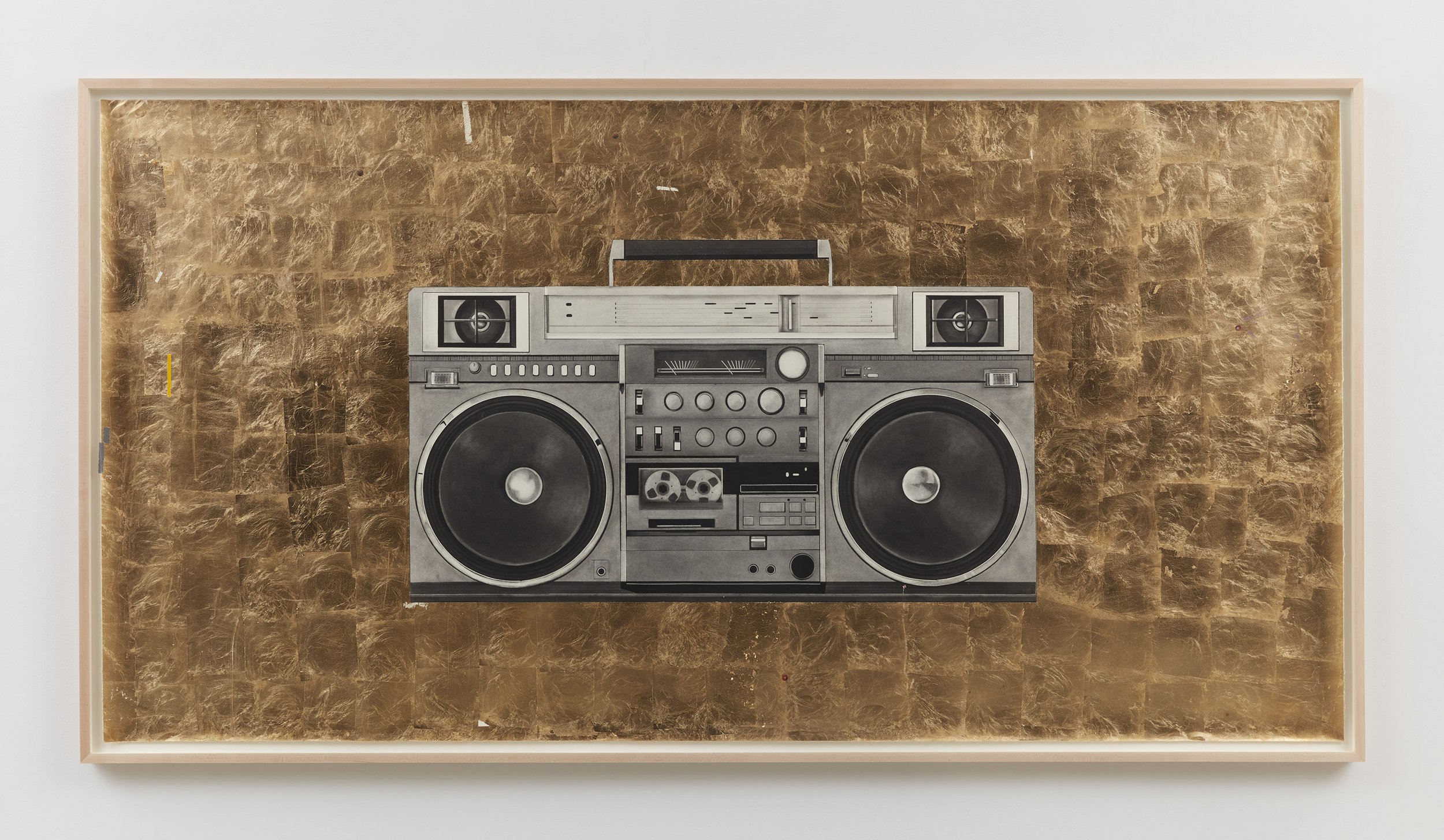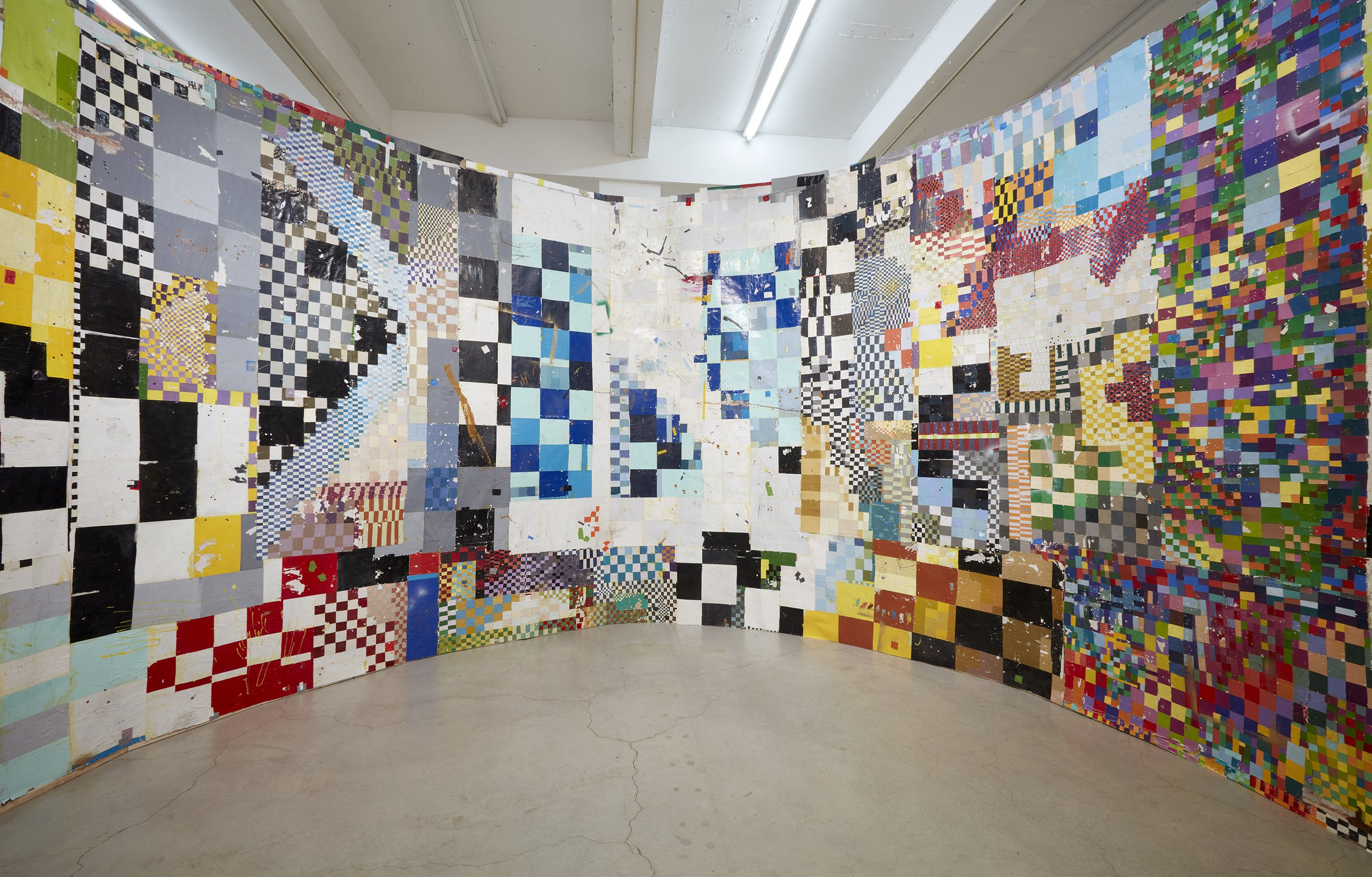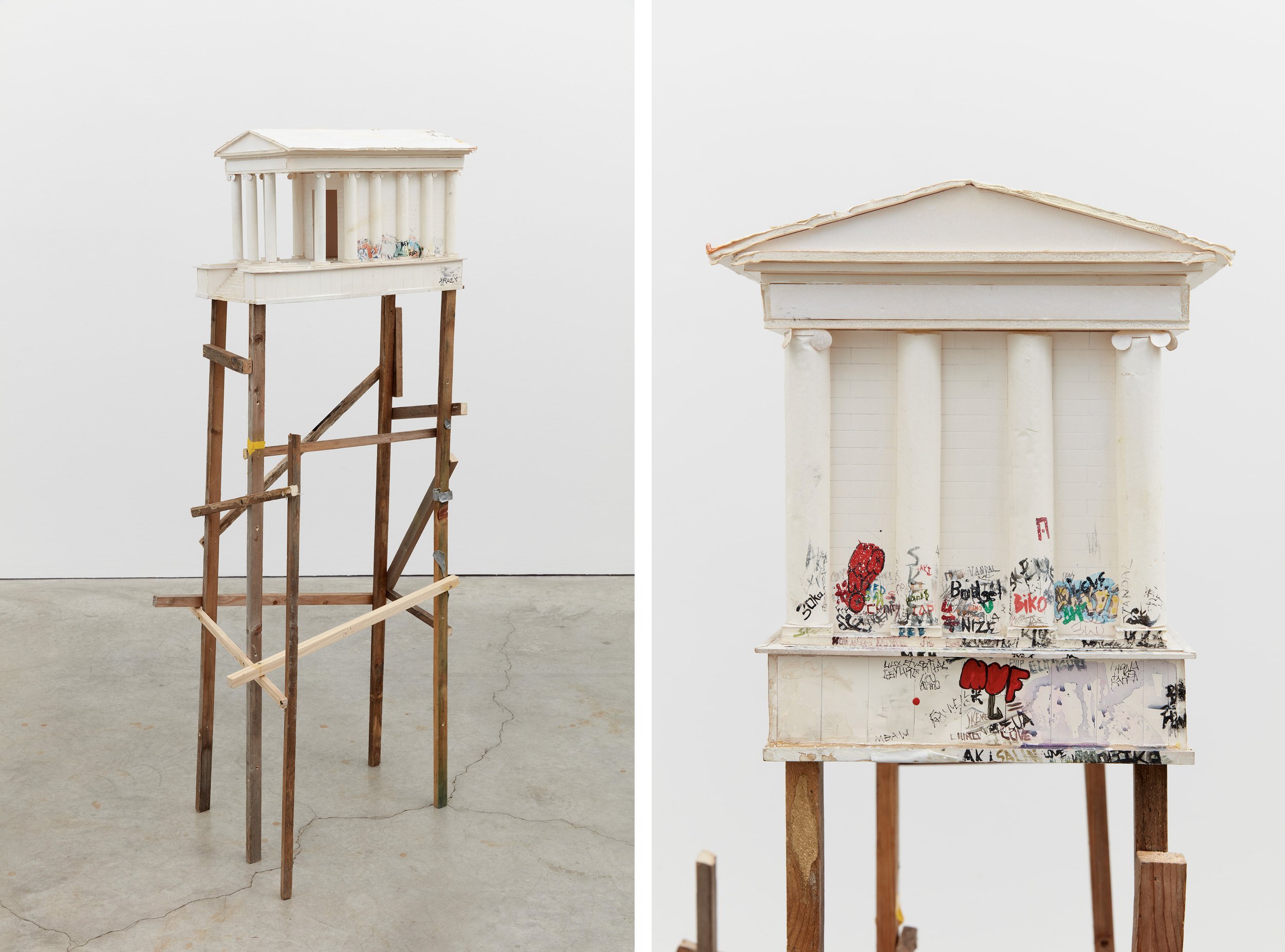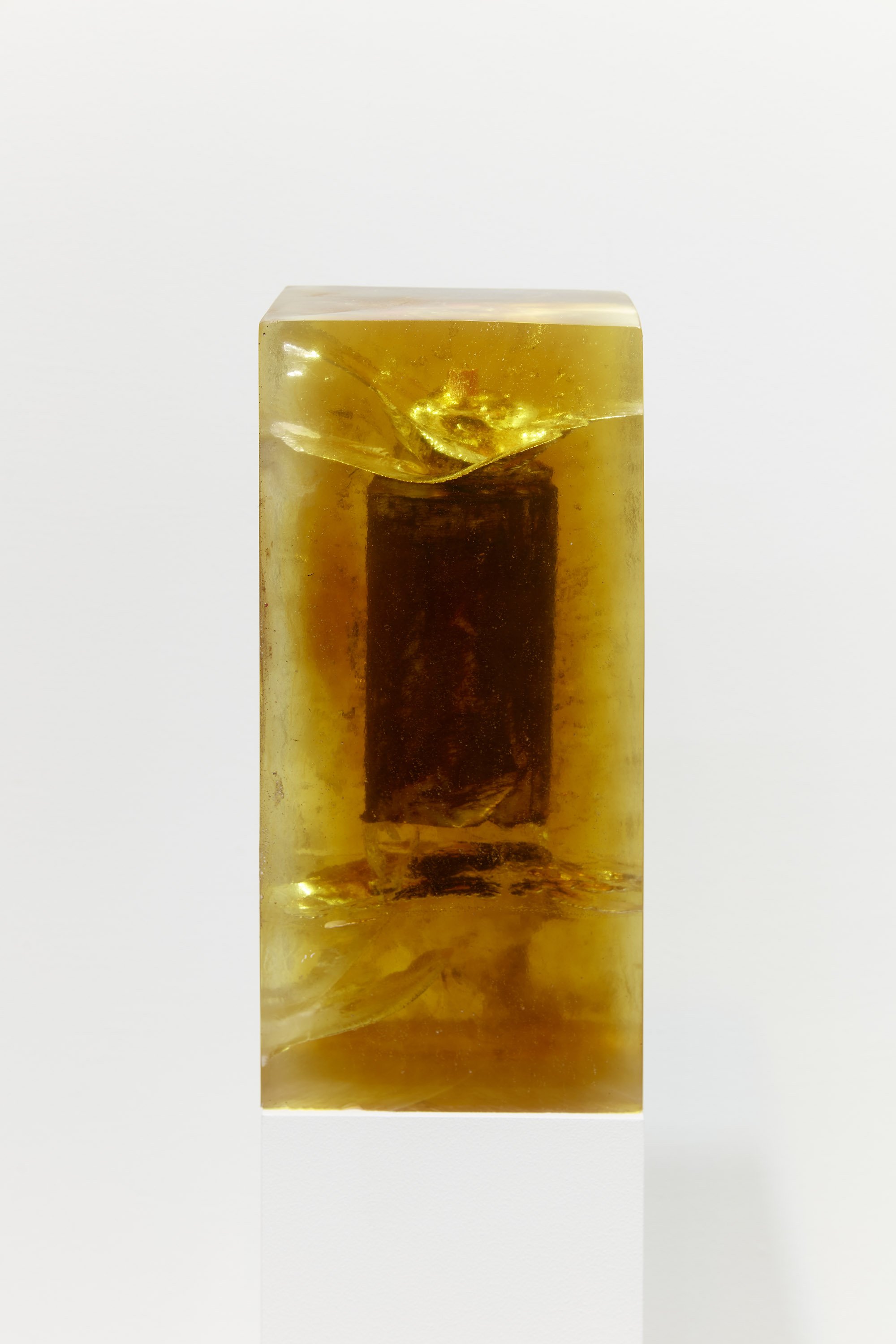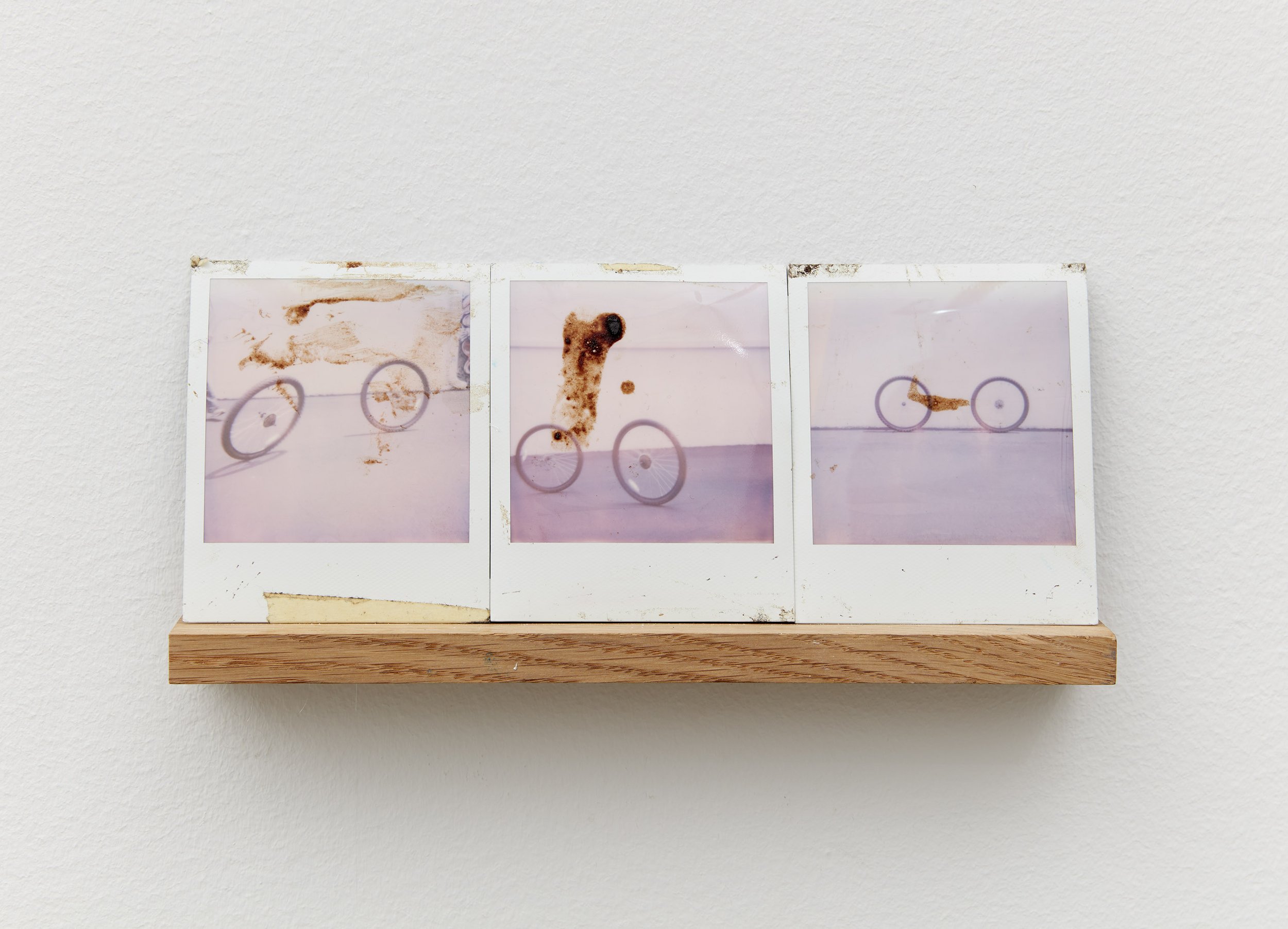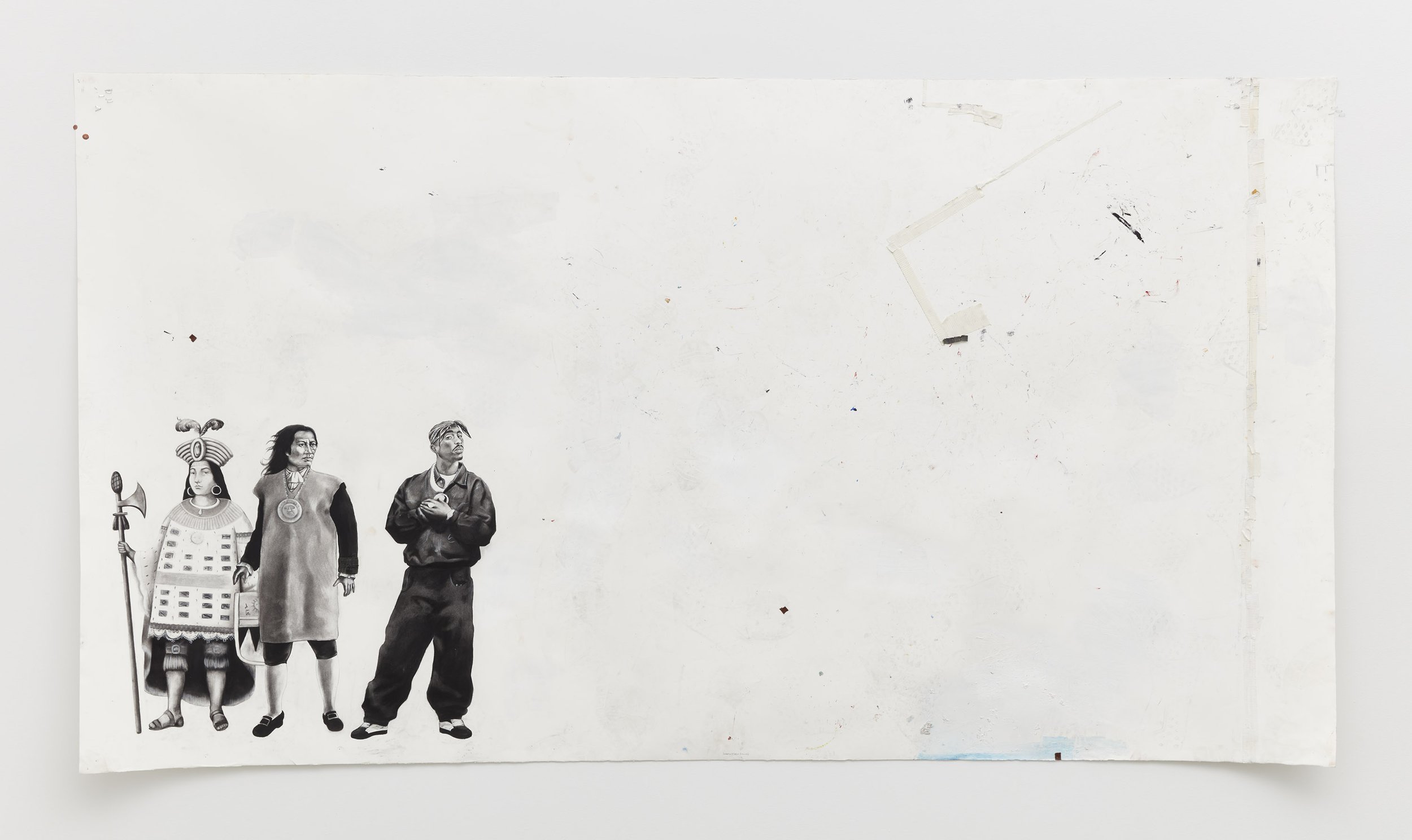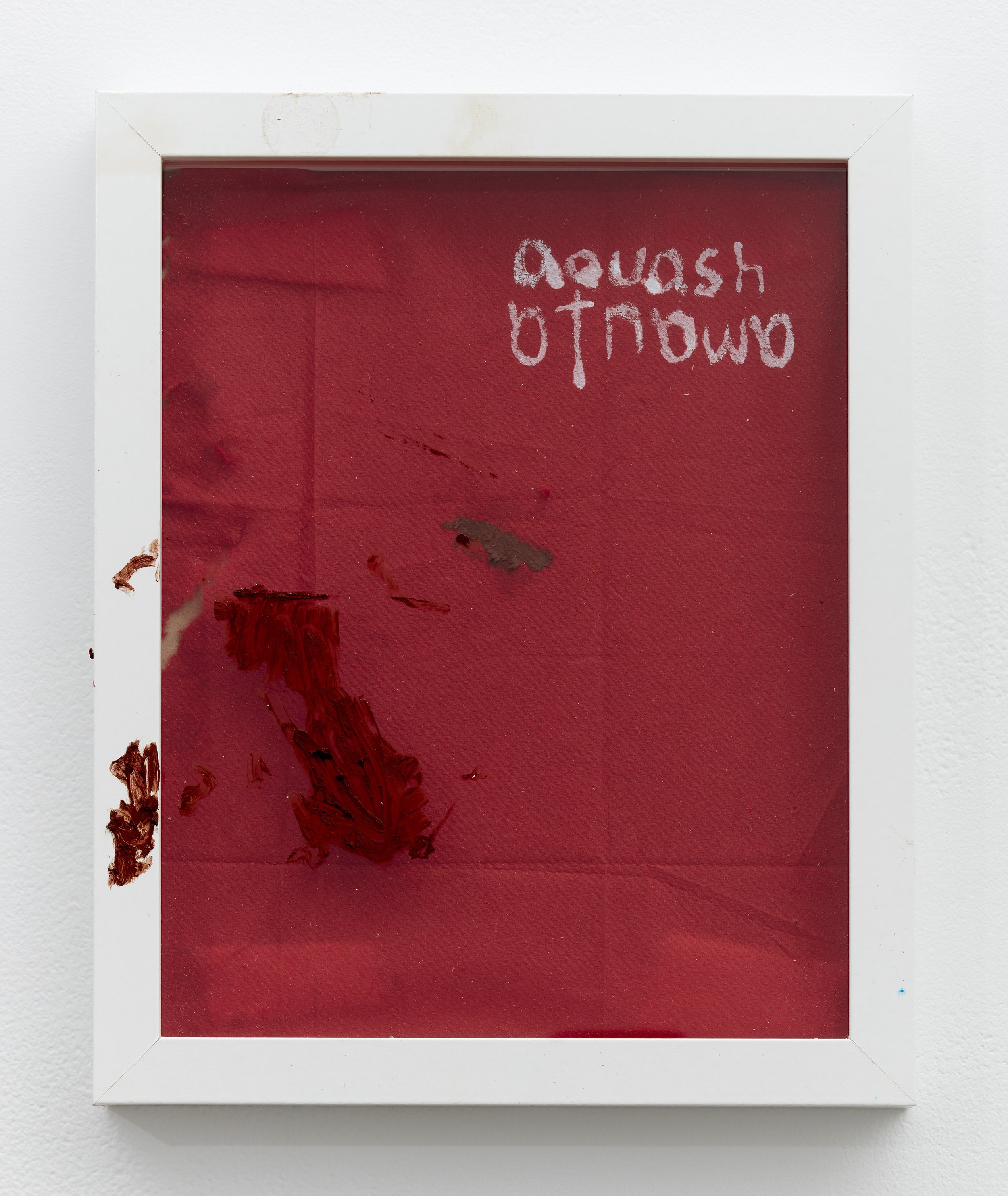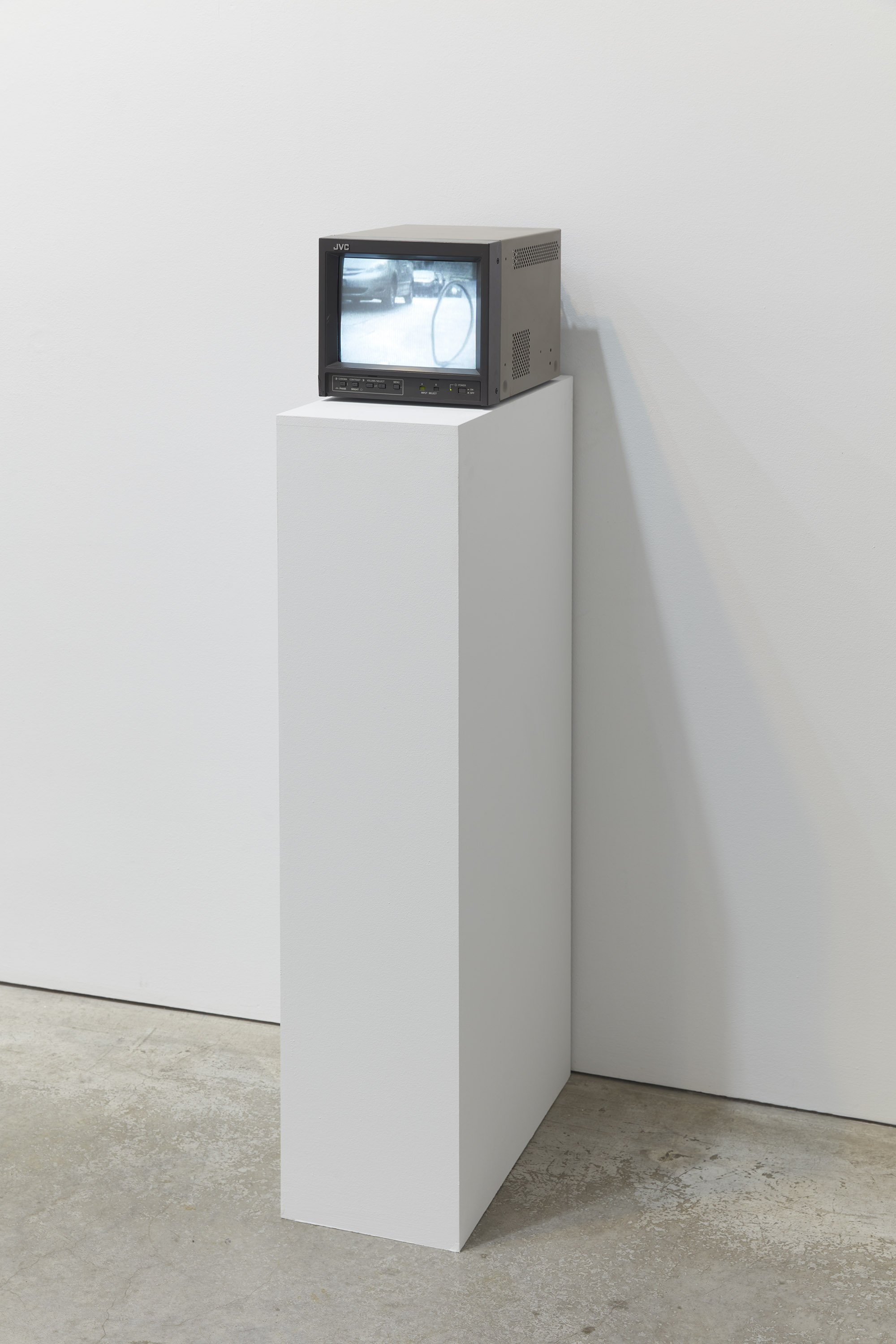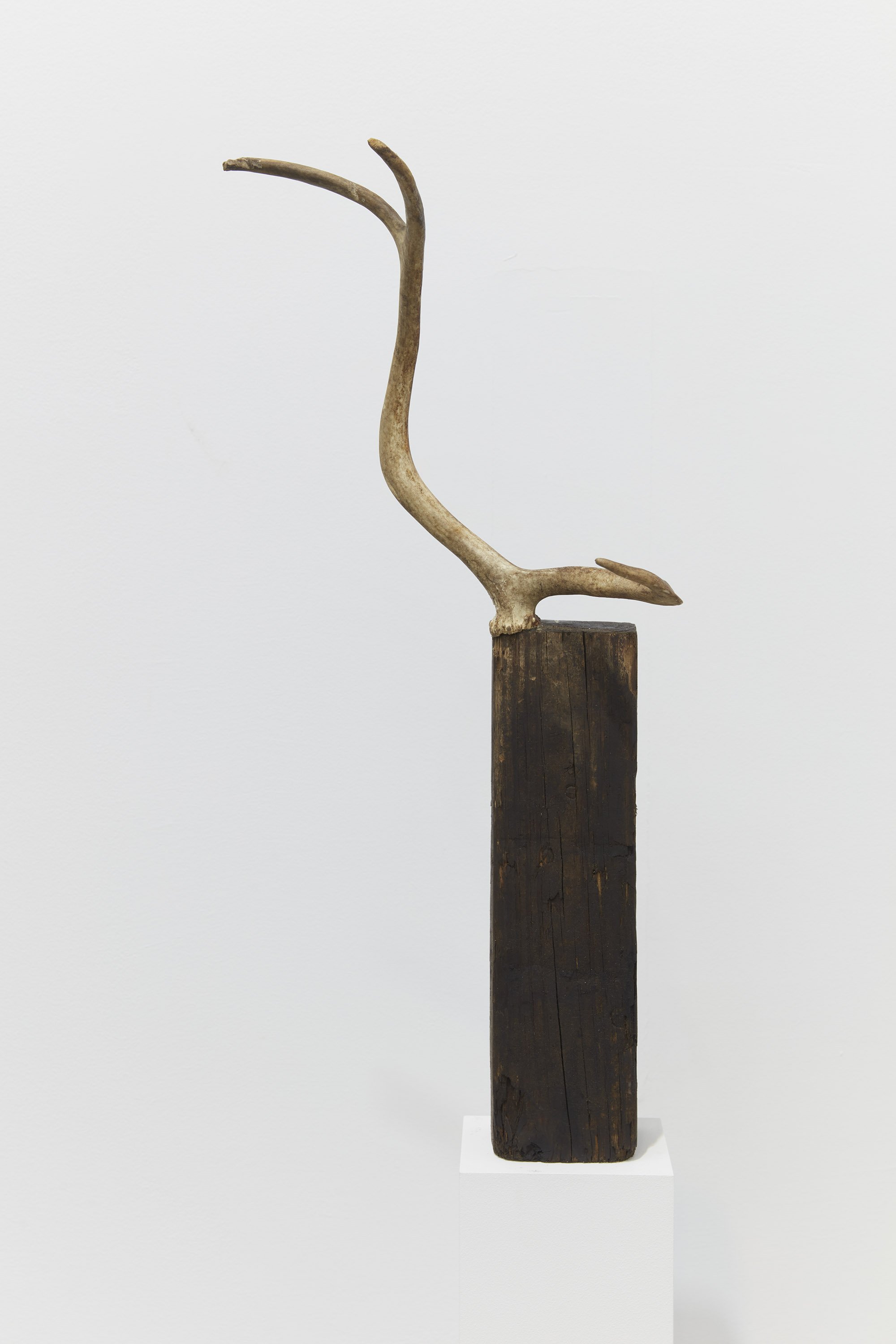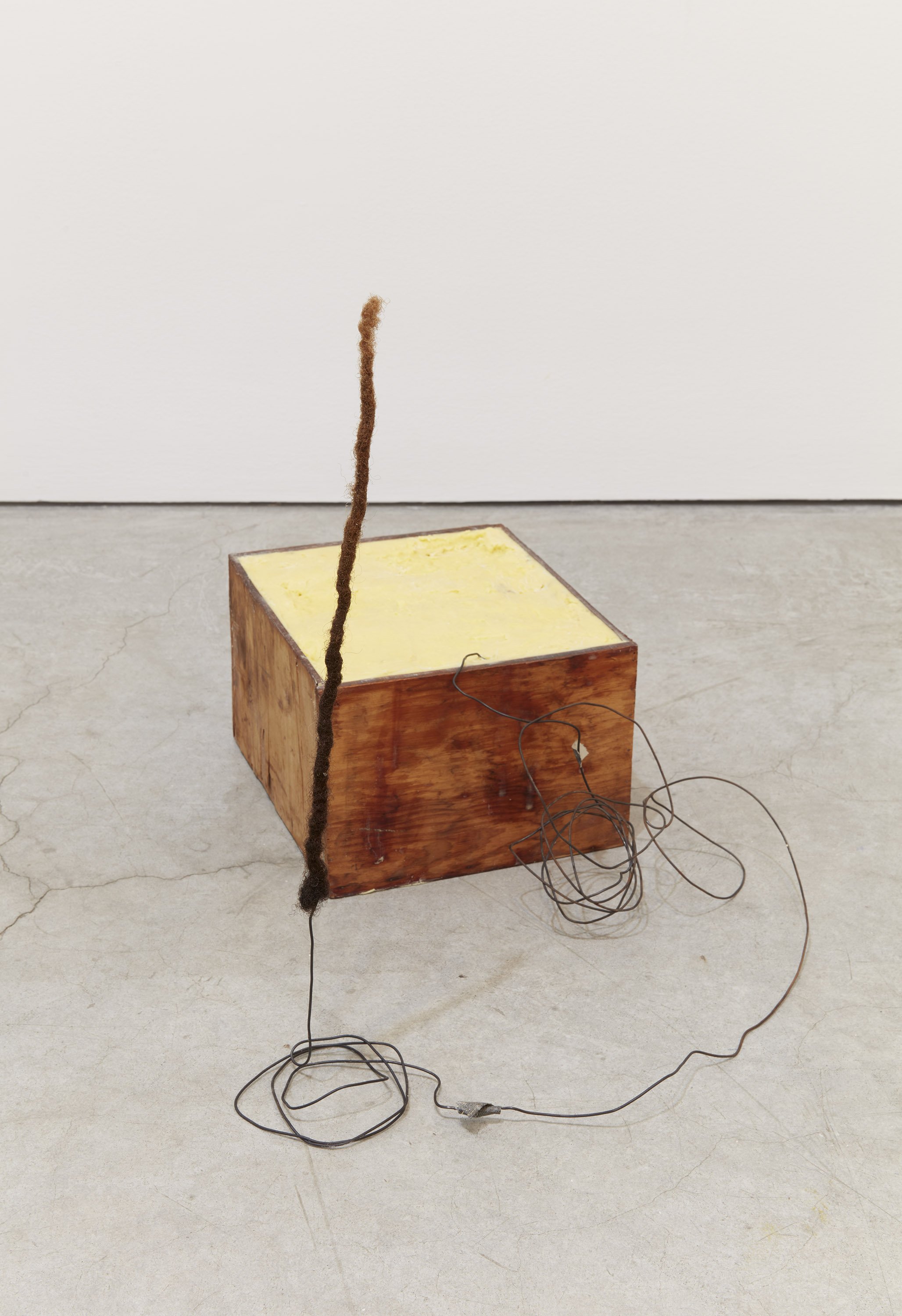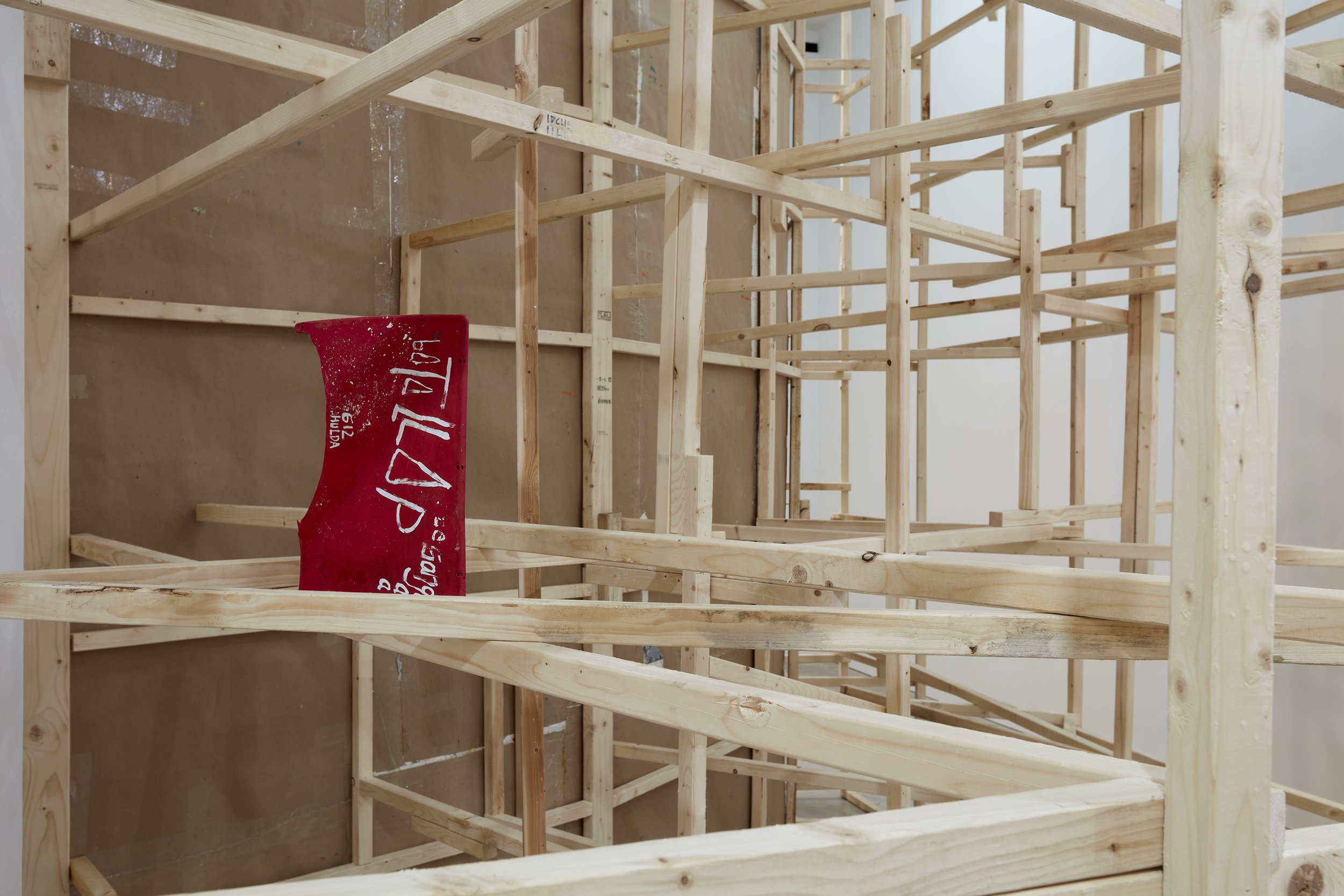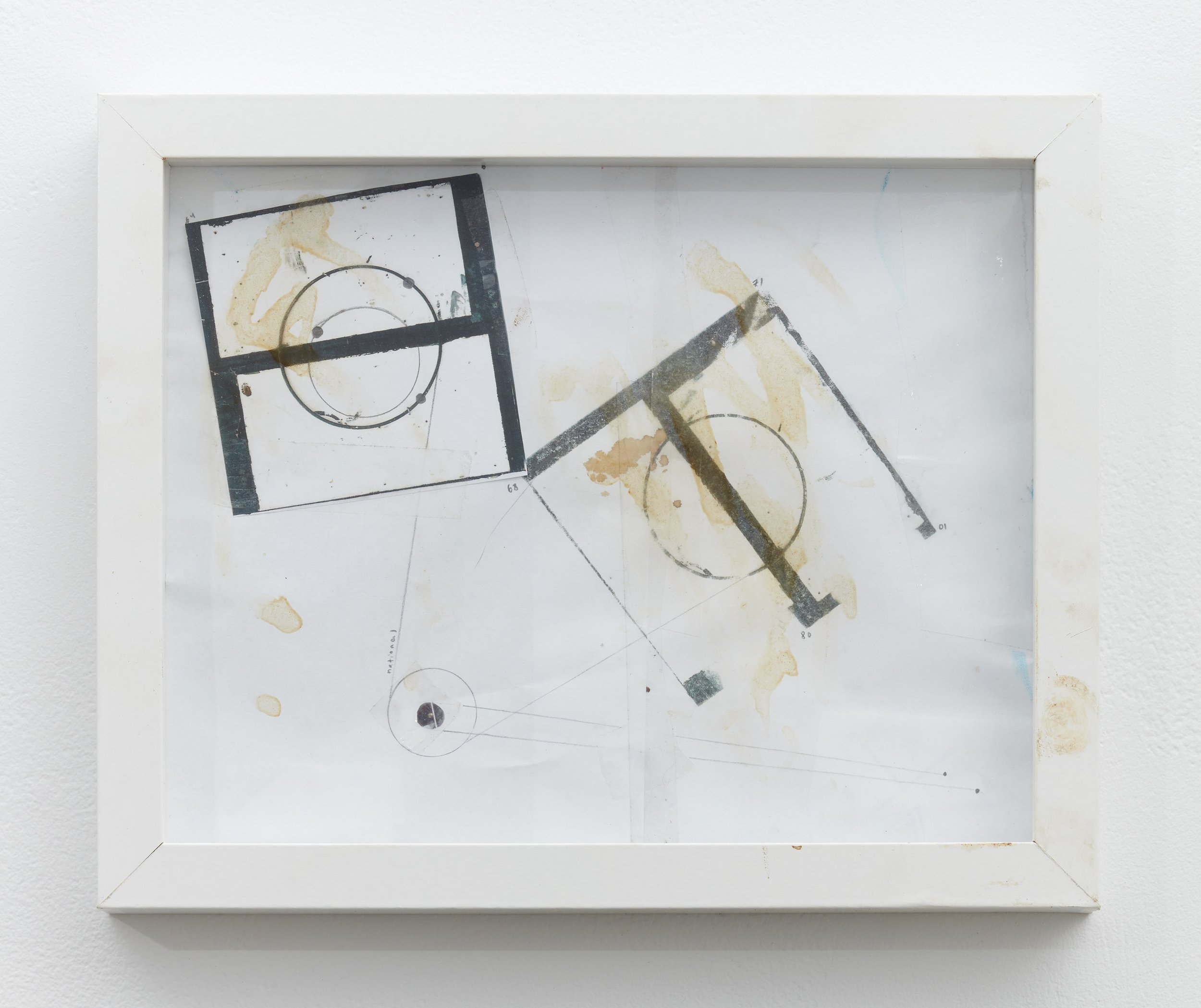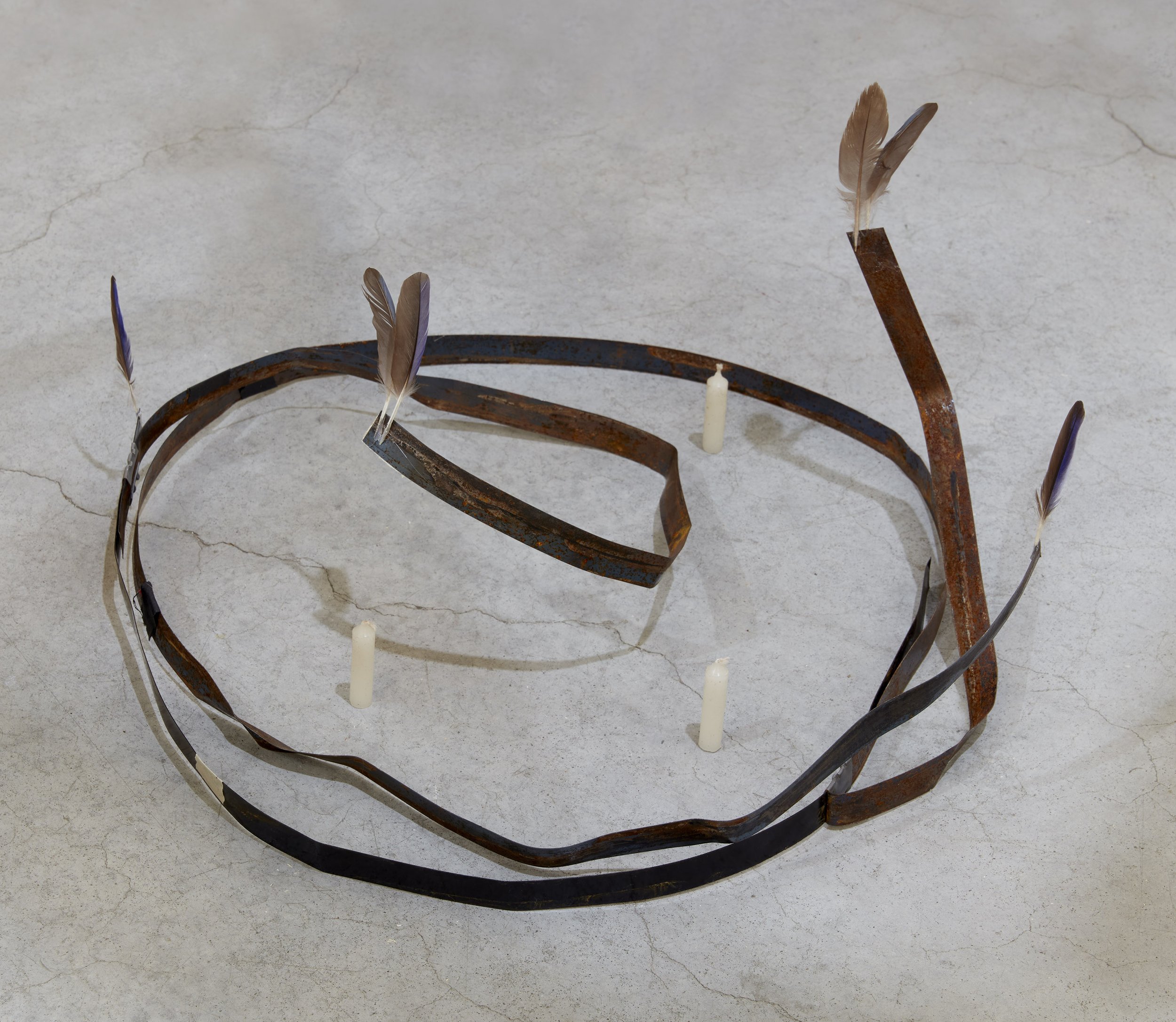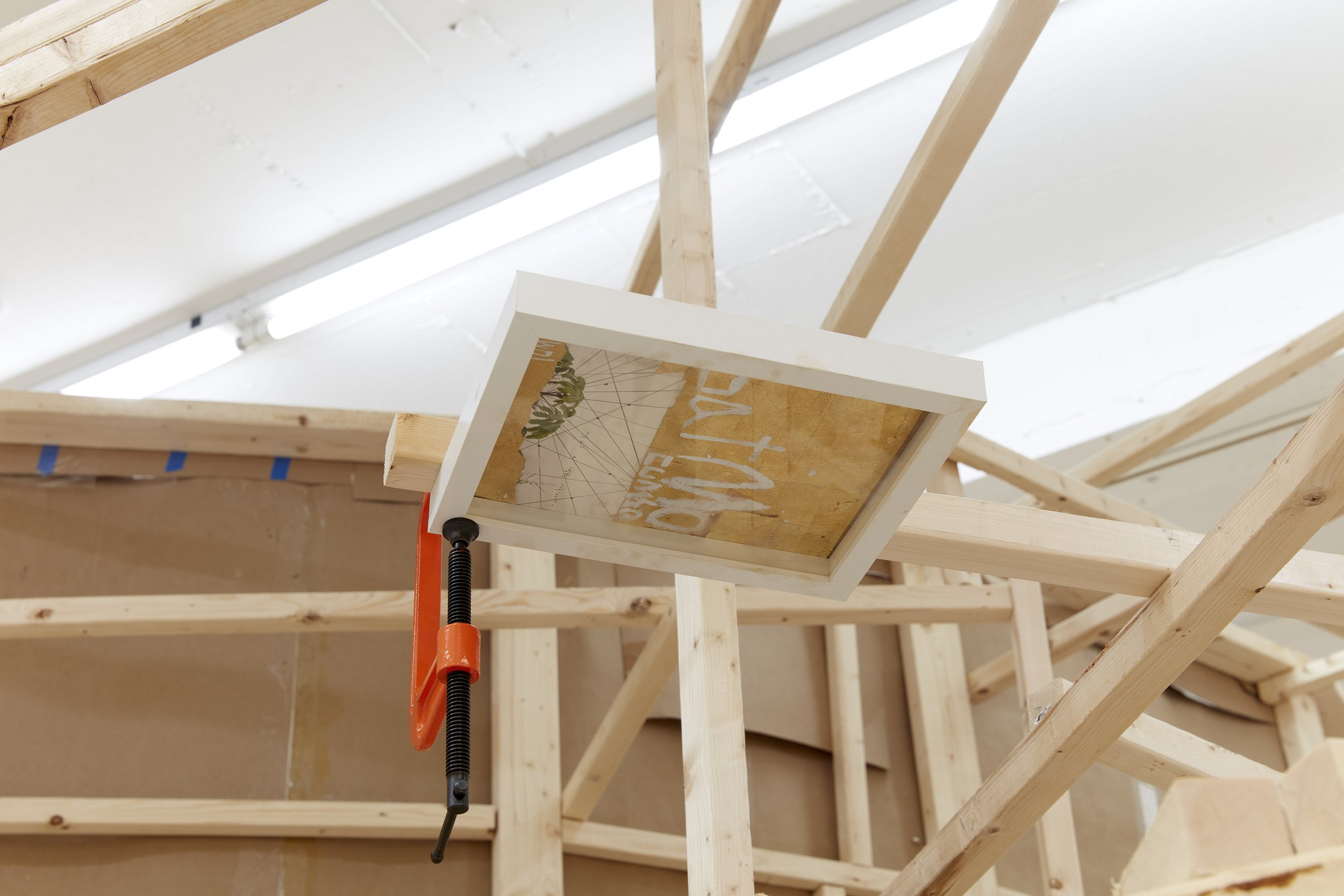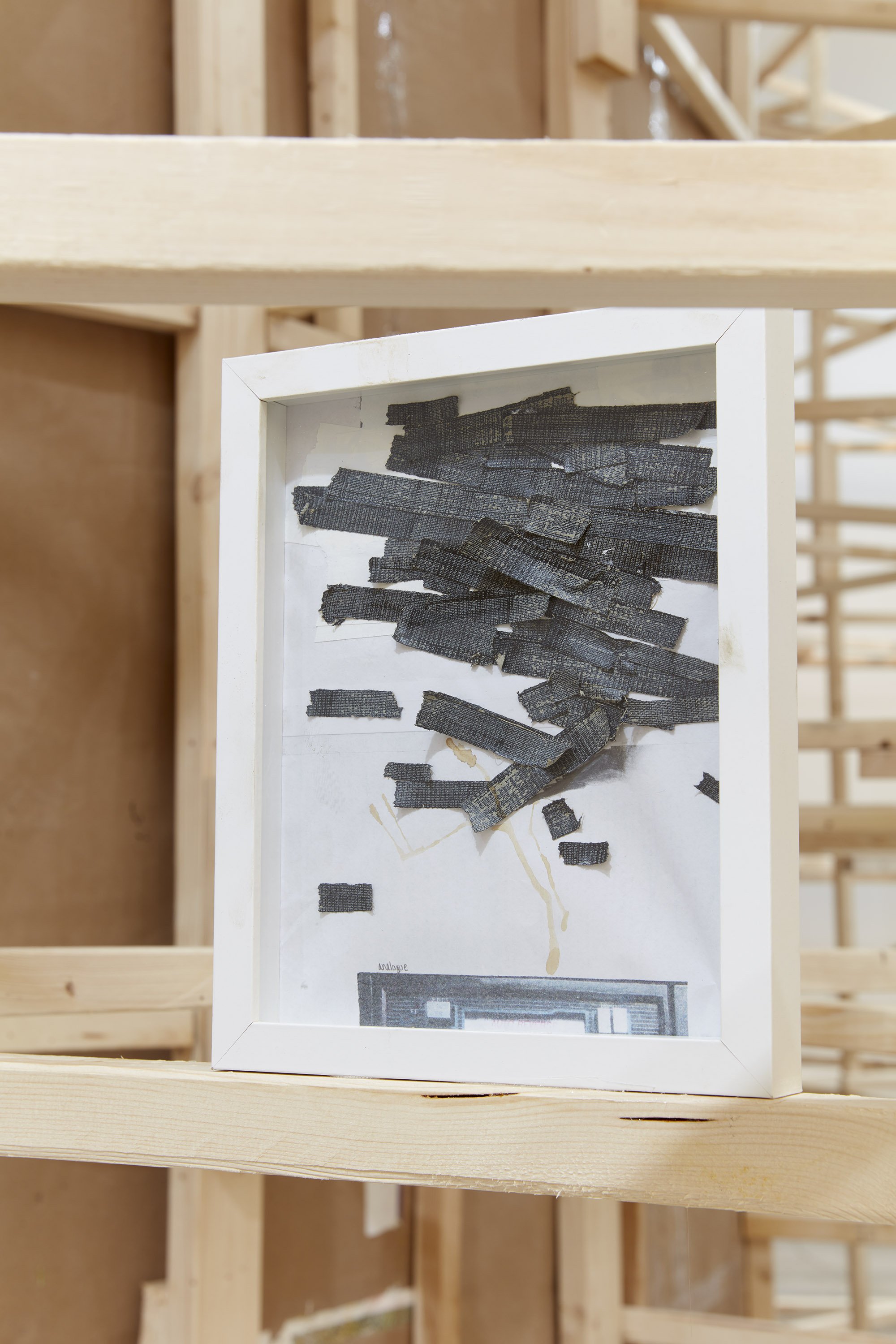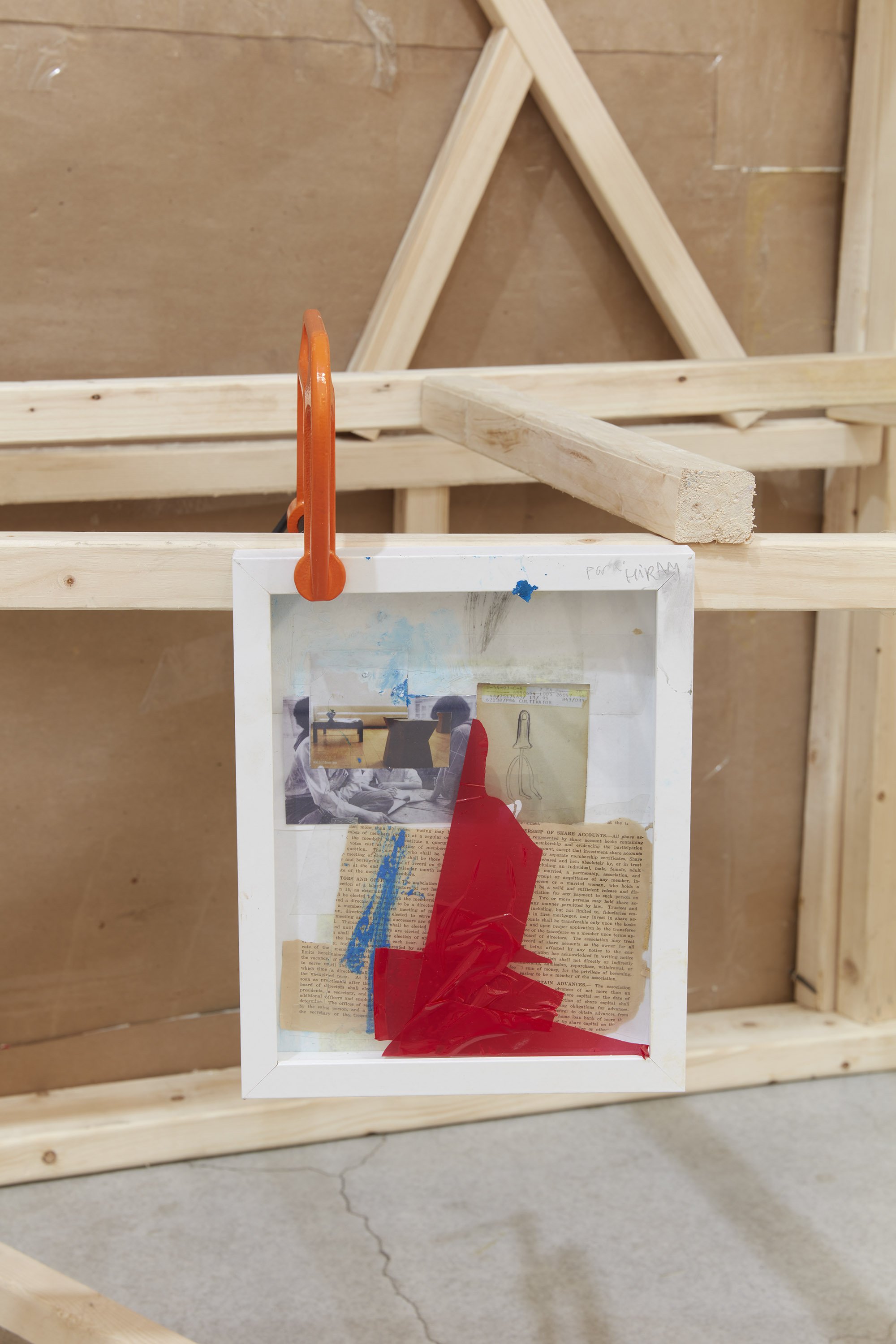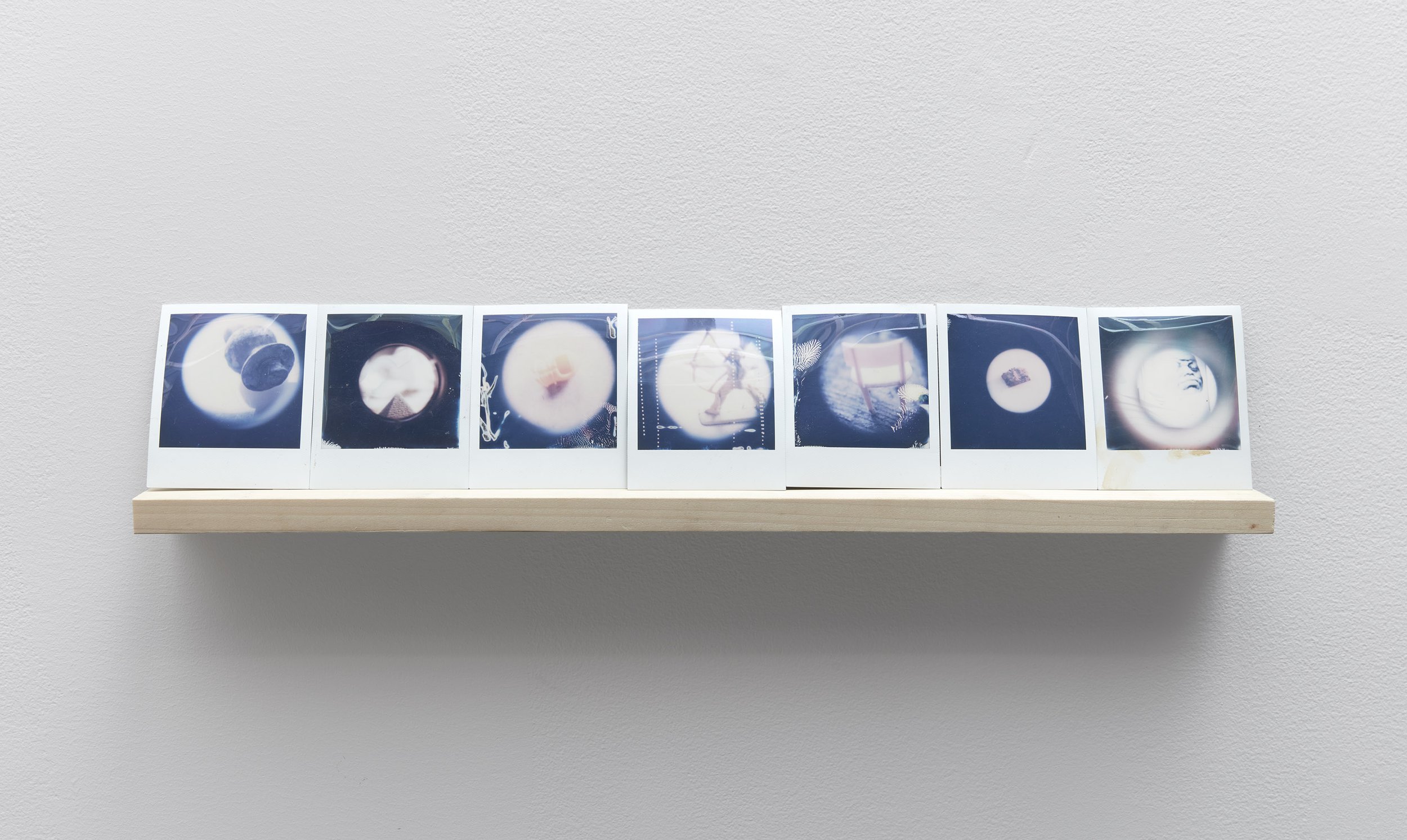WILLIAM CORDOVA
can’t stop, won’t stop (geometria sagrada)
February 9 – March 15, 2024
“Stillness is not so much the temporal absence of movement but as the charged potential for it.”
— Rudy Perez (Post-Modern Dancer)
“and you'll see a whole universe all over again and again and again...”
— Ghostface Killah, “All That I Got Is You,” 1996
Sikkema Jenkins & Co. is pleased to present can’t stop, won’t stop (geometria sagrada), a solo exhibition of work by william cordova on view February 9 through March 15, 2024. For his fifth solo exhibition at the gallery, cordova continues to develop multimedia installations that examine and uncover the encoded traces of Andean, African, and Asian influences in our transcultural landscape. Exploring the coexistence of ancient spiritual spaces and their contemporary secular counterparts, cordova seeks to cast a light on things unseen but felt, heard, and traveled. Abstracted actions, echoes, reverberating frequencies, sacred geometric patterns, both biological and human made, are the basis of abstraction in ancient civilizations; as such, they have often been a source influence on modern art, but are rarely given credit or allowed to be part of its dialogue. cordova’s objective is to reconnect this evidence as a way of uncovering these visual and euphonic synchronies embedded across time and space.
The exhibition features 12 apostles, a suite of twelve large-scale charcoal drawings on gold leaf, mounted on paper, based on iconic boombox radios produced during the infancy stage of Hip Hop in the 1980s. cordova’s interest in transistor radios, as territorial markers, sonic vessels, and ephemeral power amulets, originates with Santeria, Third World Cinema and Radio Receivers for the Third World. The syncretic boombox renditions of 12 apostles include sharp gf 777 (tupac amaru), sharp vz 2000 (eleggua), and promax super jumbo j-1 (ogun), the latter made famous by Radio Raheem in the 1989 Spike Lee joint, Do the Right Thing. Lee (Spike, Bruce, Lee-Lew) also understood the significance of disrupting the status quo, sacrifice, and the total embodiment of liberation.
The production and ownership of material goods, such as boomboxes, tend to have a symbiotic relationship within the realm of ritual and spiritual remnants. Labels of “Made in Japan,” “made in Taiwan,” “made in Mexico,” echo the geography of western Cold War material production but also resonate an imprint of altruistic and idiosyncratic labor. The roots of these objects and their making can be viewed through a non-western logic syncretizing the surfaces of modern radio designs with religion, architecture, and ancient sacred geometric values. As the late author Greg Tate stated, “Can a community whose past has been deliberately rubbed out, and whose energies have subsequently been consumed by the search for legible traces of its history, imagine possible futures?”2 Tate understood this battle would have to be fought street by street by sonic Hip Hop counterculture practitioners who pioneered the 80s ground-to-air wave rebellions: Sha-Rock Missy Mist, Kurtis Blow, Martin Wong, Lady Pink, LL Cool J, Lee Quiñones, Roxanne Shanté, MC Shy D, Anquette. Grand Master Flash & The Furious Five, Rammellzee, etc.
2 tienes santo pero no eres Babalawo (2004-2023) is a foam board miniature pantheon reclaimed by cordova in Harlem during his art residency at the Studio Museum in 2004-2005, but only fully realized as a work in 2023. The piece functions as an ideogram for civil disobedience, cleaved with the residue of past martyrs. Its surface, like the moon, is tattered with aerosol art pioneers such as Dondi, Lee, Lady Pink, Taki 183, Cornbread, Seen, Bojorquez, and Asco Collective. The sculptures wooden scaffolding originates in Ponce, Puerto Rico and Arequipa, Peru (birthplaces of Dr. Laura Meneses and Dr. Albizu Campos).
can’t stop, won’t stop (geometria sagrada) is a site-specific large scale paint chip college cardboard piece mounted on scaffoldings made out of wooden studs. The work is a meditation on the spatial-temporalities of rhythmic gestures within a confined environment: fractals, Chess boards, Gee’s Bend quilts, Andean tunics, and B-boy dance platforms. cordova has crafted a fourth dimensional portal intended to disrupt and defy linear narratives by folding and fragmenting time itself in a simultaneous allusion to the past, present, and future. The structure aims to challenge the viewer by using absence as architectural tension, harnessing this implied presence as a rupture against containment. Movement systems like breakdancing, Capoeira, Danza de Tigers and Kung Fu allude to the intangible nature of codified sequences that oscillate between examples that may appear to be disparate at times.
cordova’s installation will include two videos the artist has rarely shown publicly, you’re all a bunch of fucking idiots (2002) and 18° 6’ 11.87” N, 94° 2’ 24.69” W (de cero a la infinidad), (2009). Both works draw and reflect on visual and harmonic subversive actions; pirated video recording of a 1980s Break dance contest, reclaimed Super 8MM film footage, bootleg audio recording of The Doors (rock group) Miami Dinner Key Auditorium concert (1969) and a snippet of KRS-One Attacks. cordova will likely include collaborate works with artists N. Masani Landfair, Onajide Shabaka, Yanira Collado, André Leon Gray, and filmmaker Monique Walton.
This exhibition is dedicated in memory of Brent Sikkema.
Cultural practitioner william cordova (b. 1969, Lima, Peru) graduated with a BFA from The School of the Art Institute of Chicago in 1996 and earned an MFA from Yale University in 2004. His site-specific installation Off the Wall is currently on view at Moody Center for the Arts, Rice University, Houston, TX, through August 2024. Notable recent solo exhibitions include can’t stop, won’t stop: tenets of southern alchemy, Moss Arts Center, Virginia Tech University, Blacksburg, VA (2023) and on the lower frequencies I speak 4 U, Baltimore Museum of Art, MD (2022). His first major survey exhibition, now’s the time: narratives of southern alchemy, was presented at the Pérez Art Museum Miami, FL in 2018. cordova has organized numerous curatorial projects, including Post Hip-Hop? Or return of the Boom Bap!, Sikkema Jenkins & Co., NY (2023) and can’t stop, won’t stop: meditations on resistance, LeRoy Neiman Gallery, NY (2022).
cordova’s work can be found in the collections of Harvard University, Cambridge, MA; Museo de Arte de Lima, Peru; Pérez Art Museum Miami, FL; Solomon R. Guggenheim Museum, NY; Whitney Museum of American Art, NY; and Yale University, New Haven, CT, among others. In 2021, he was awarded the John Simon Guggenheim Memorial Foundation grant, and received a Joan Mitchell Foundation Grant in 2011. cordova has participated in artist residences at Artpace, San Antonio, TX; The Headlands Center for the Arts, Sausalito, CA; The Studio Museum in Harlem, NY; Skowhegan School of Painting and Sculpture, Skowhegan, Maine; and American Academy in Berlin, Germany.
Download press release (PDF)

